The Best Guitar Picking Technique: Alternate Picking vs. Economy Picking vs. Directional Picking

EMAIL TO GET ACCESS
By submitting your info, you agree to send it to Tom Hess Music Corporation who will process and use it according to their privacy policy.
What is the best overall picking technique for guitar?
Economy Picking, or
The answer may surprise you. Although you may not (yet) agree that Directional Picking is better than Alternate Picking and Economy Picking, after laying out all the facts (and, more importantly, the context), you may change your mind about which is the best overall picking technique for guitar...

EMAIL TO GET ACCESS
By submitting your info, you agree to send it to Tom Hess Music Corporation who will process and use it according to their privacy policy.
I’m no stranger to challenging the status quo.
One such example, is...
... my heavy criticism of the (flawed) CAGED system for guitar scales.
(In addition, I also recommend you check out music theory for guitar expert, Dr. Tommaso Zillio’s article on CAGED.)
So, let's compare alternate picking vs. economy picking vs. directional picking.
May the best guitar-picking technique win...
Defining Guitar Picking Techniques
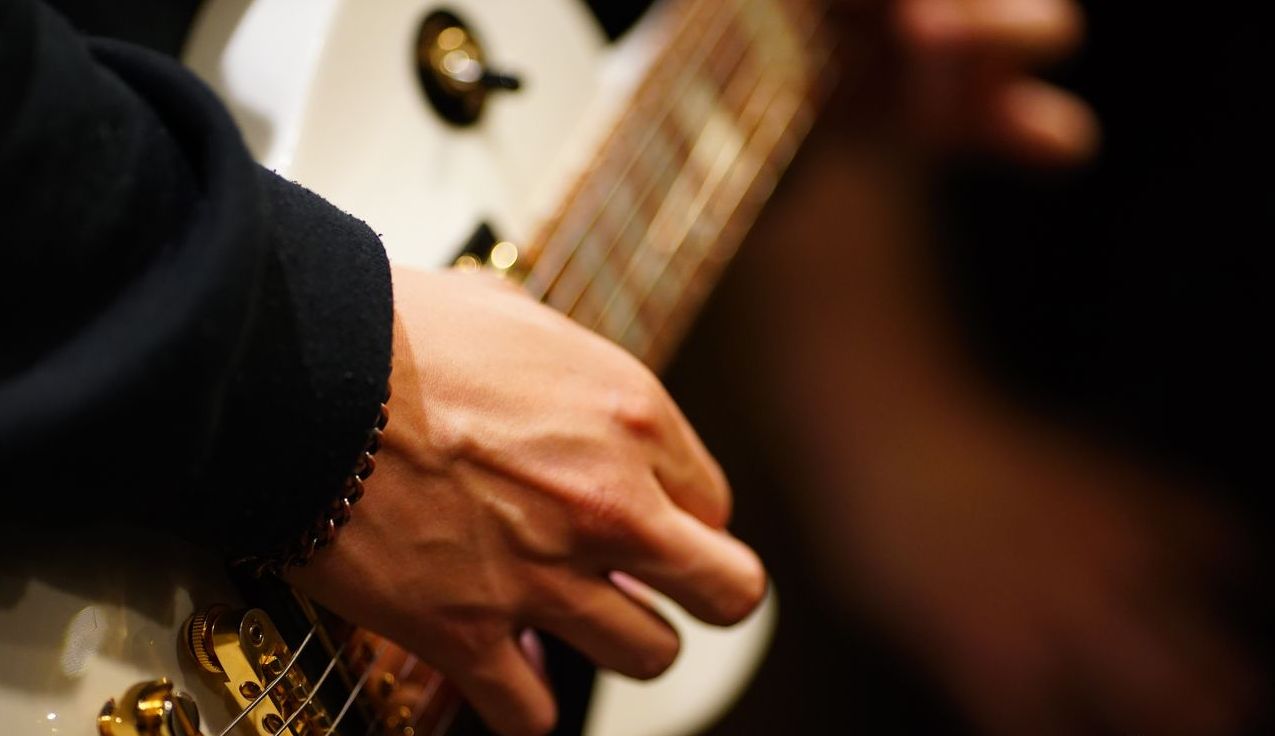
What is Alternate Picking?
Alternate picking is the strict alternation of down and upstrokes regardless of what note was played before or what note was played after.

What is Economy Picking?
Economy Picking uses alternate picking when on the SAME string but ALWAYS REQUIRES sweep picking when changing strings. This is done for perfect, maximum guitar picking efficiency (and speed).

However, since the sweep picking motion is required (without exception) to change strings, Economy Picking must always be planned in advance. This means many guitar licks are impossible to play using strict Economy Picking.

Economy Picking is often confused with Directional Picking. The two picking techniques are vastly different in principle and practice – even though they may look the same in some special situations.
What is Directional Picking?
The principle behind Directional Picking is to move the pick in the shortest possible way to the NEXT note – whether the note before was played with a downstroke or upstroke. This way of picking notes on the guitar gives you the maximum efficiency to get to the following note without having to preplan in advance.

Unlike Economy Picking, all possible guitar licks are playable using Directional Picking.
Where The Term “Directional Picking” Comes From:
Although the Directional Picking technique has been around for a very long time, I invented the term Directional Picking in 1989 to describe better the technique and the principle behind it (to pick in the direction of the shortest possible path to the following note - whether on the same string or a different string).
Why Some People Say Alternate Picking Is The Best Picking Technique For Guitar
Many alternate pickers love to defend alternate picking. Some even seem to take it personally when anyone criticizes alternate picking – as if one was criticizing their mother.
Sounds crazy. I’ve received more than my fair share of heat whining and rational discussions personal attacks because I dared to compare & contrast Alternate Picking to other guitar picking techniques and conclude that Directional Picking is (far) superior to Alternate and Economy Picking.
Here's the list of what they often (falsely) claim about Alternative Picking:
On the surface, that may look like an impressive list of claims.
There’s just one little problem …
… some of these claims are simply false …
… other claims (if true) would actually be significant Disadvantages.
… and still, other claims don’t matter - especially when compared to (much) more significant advantages of Directional Picking.
A deeper look at each claim will quickly reveal why.
Please keep an open mind and decide for yourself as we evaluate each pro-Alternate Picking claim.
This claim implies that downstrokes create accents, and upstrokes do not.
This is a fallacy.
Even if true, it would not create an advantage – it would create a huge disadvantage.
Here are just a few examples where “natural accents” (if they existed) of Alternate Picking would be a disadvantage:
- What if your guitar lick contains both eighth and sixteenth notes?
- What if the phrase is syncopated?
- What if you are playing straight triplets?
- What if you are playing a combination of 16th notes and triplets?
- What if you’re playing in compound meter (6/8, 9/8, or 12/8)?
- What if the lick begins off the beat?
- What if you play odd divisions (quintuplets, septuplets, etc.)?
- What if you’re playing in an odd meter?
- What if you simply want some variety in your accents?
- What if you don’t want any accents?
- In all these cases (and many others), your down-up pattern will be out of sync with the strong and weak beats and would be accenting notes you may not want to accent and not accenting the notes you do want to accent.
Fortunately, downstrokes do not “naturally” accent notes. YOU make (or don’t make) accents when you play ... downstrokes or upstrokes ... YOU are in control (or at least, you should be)!
Alternate Picking doesn’t naturally accent anything - and that’s a good thing!
Any good player can (and does) accent the notes he wants - and doesn’t accent the notes he doesn’t want to accent.
If downstrokes are automatically accented, and upstrokes are not, that would say more about the player’s lack of skill than it would say about the picking method he’s using.
It’s simply not true that Alternate Picking has a “natural” accent inherent in the technique. Again, if it did, that would be a significant DISadvantage, not an advantage.
This is a myth. One can indeed play with a very aggressive sound using Alternate Picking. However, that same aggressive sound can be created using Directional Picking. Like anything else, it just takes a little practice.
The fact is, picking techniques (including Alternate Picking) do not have distinctive sounds. Players create the sound.
In the hands of a good guitar player with good articulation skills with both picking systems, you will never hear the difference between Alternate Picking and Directional Picking.
Students often ask me to play something using Alternate Picking and Directional Picking. They cannot hear the difference when not looking to see which guitar-picking technique I’m using.
This is true because I’ve practiced my articulation skills. If I want an accent on a downstroke, I create it. If I want an accent on an upstroke, I make it.
With a bit of practice, anyone can do the same.
IF Alternate Picking DID have a distinctive sound, that would immediately become a significant DISadvantage whenever one wants any other sound.
Fortunately for Alternate Picking, it does NOT inherently have a distinctive sound.
While it is true that some guitar players play with a distinctive picking sound when using Alternate Picking - Again, that says more about the player than it does about Alternate Picking.
Many Alternate Picking players believe this is true.
Many Directional Picking players would say the same thing about Directional Picking.
Can they both be right?
Yes. And No.
While it may be true that the people who say one picking technique for guitar has stronger articulation than another way of picking, this means that their preferred picking technique is more familiar TO THEM.
They are more comfortable playing with strong articulation with whatever picking technique they have practiced most.
The reality is that when you train and master your picking articulation, you can play with all the power you want using either Directional Picking or Alternate Picking.
Neither guitar-picking technique has any inherent advantage here. So, the claim that Alternate Picking has stronger articulation is again false.
Really?
When moving from the G string to the B string, is it logical to play the note on the B string with an upstroke?
Of course not. Yet, that’s precisely what Alternate Picking would require if the note played on the G string were played with a downstroke.
As we all learned in school, the shortest distance between two points is a straight line. With directional picking, we use the straight-line approach to minimize the motion needed to get to the following required note.
When using Directional Picking, you go DIRECTLY to the B string from the G string (hence my name for the technique). There is no need to memorize predetermined picking patterns or blindly follow an arbitrary Down-Up Alternate Picking rule.
Directional Picking, not Alternate Picking, is guitar's most logical picking technique.
First, it’s no surprise that Alternate Picking players would make this claim. It's only because they spent more time practicing Alternate Picking than any other picking technique for guitar; thus, Alternate Picking feels more natural TO THEM.
Fact is: ANY picking technique will “feel most natural” to someone who spends more time practicing that picking technique on guitar than another.
Economy Picking, Directional Picking, Circular Picking, or All-Down-Stroke Picking will all “feel” no less natural to those who use them most of the time.
Second, Alternate Picking seems unnatural for most people learning to play guitar. Many guitar teachers constantly have to remind (force) beginning guitar students to stick to strict Alternate Picking precisely because it’s NOT natural.
Many guitar students (intelligently) question the logic behind such a picking system that forces them to (illogically and unnecessarily) jump over strings like this:

Many guitar players who haven’t yet formed any particular guitar-picking habits find that Directional Picking is objectively much more natural for both the hands AND the brain. It simply makes more sense and feels more natural.

The Directional Guitar Picking technique is the objectively more natural one.
As a concept, Alternate Picking (with its strict down-up-down-up picking pattern) is quite simple. And if you only play notes on the same string, it is simple in practice.
However, once string changes are involved, Alternate Picking is anything but simple.

Directional Picking is much more straightforward with its single rule: move to the following note in the most direct (shortest) way possible, no matter what picking motion is used on the current note.
This principle is more logical, efficient, and natural; it’s more straightforward as a concept and in practice than Alternate Picking.
Some claim that Alternate Picking helps one keep time. I’m not sure where this idea started, but it seems to have gained momentum over time as a pro-Alternate Picking claim.
First, if one relies on a picking technique to keep time, then some essential timing practice is desperately needed!
Second, just because Alternate Picking contains a simple down-up picking stroke does not make it any more precise than any other picking technique in terms of timing. This immediately becomes self-evident whenever you change strings using outside picking motions.
In such cases, the pick must move a much longer distance to the following note. “This means you need to move your hand much faster to get to the following note on time. If not, you’ll be late for the next note.” [A thank you to Dr. Tommaso Zillio for the quoted statement and other contributions throughout the article]
Another Alternate Picking fallacy revealed.
Why? How so?
Typically, no answer is given.
Directional Picking is even better for palm muting and rhythm playing once you learn it. The increased efficiency, reduced tension (and thus improved endurance for really fast and aggressive rhythm playing), improved accuracy, and keeping the pick in the string trench more often are better.
As stated earlier, good Directional Picking players can (and do) play with every bit of aggressive articulation as Alternate Pickers. The PLAYER, not the technique, determines the power and finesse of picking articulation.
First, even if this statement were true, that wouldn’t make Alternate Picking better.
Second, there is no evidence suggesting that Alternate Picking existed earlier than Directional Picking.
It’s true that the name “Directional Picking” has only existed since 1989 (the year I created the term Directional Picking), but the technique is (very) likely as old as the guitar pick itself.
The origins of both techniques cannot be known, but there is no reason to think Alternate Picking is any older than Directional Picking.
There was a time when people used leeches to try to cure diseases (many people - even doctors - at the time believed this worked).
… That doesn’t make leeches the best way to cure illnesses!
Two people who are wrong about something are no less wrong than one. The same is true of 200, 2,000, or 20 million.
Look at all the elected politicians in government – all of whom presumably were chosen by a majority. Are these politicians “best” simply because they won an election?
Of course not. Voters can be (and often are) wrong.
That same principle applies to the silly claim that Alternate Picking is somehow better because many people use it. Popularity does not make something any better than slimy leeches or slimy politicians.
Many well-known guitarists (who play great) use alternate Picking. That undeniable fact is not in dispute …
… what IS in dispute is the assumption that Alternate Picking helped make them great.
Fact is, these guitarists are not great because of Alternate Picking but DESPITE it.
When they were learning to play (for whatever reason), they learned Alternate Picking and practiced it for years and years. Despite all the (now obvious) flaws with Alternate Picking, these players (unnecessarily) practiced longer and worked harder to develop the exceptional skills they currently have.
With enough (extra) work and time, you also can become a great player using Alternate Picking. But it will take much longer and be much harder – this is one reason why most guitar players will never become great.
Instead of blindly following the techniques and methods your favorite guitar players use, stop and ask yourself if there is a better, more efficient way to get where you want to go in less time.
If you want to sound like your favorite guitar player, you don’t necessarily need to approach playing with the same technique.
There may be a better way.
There is a better way to pick notes on the guitar.
When I started playing guitar, I used Alternate Picking (because my guitar teachers pressured me to do so). After learning and switching to Directional Picking, I now see Alternate Picking as trying to run fast facing backward. It makes much more sense to turn around and run faster (with less effort) facing forwards.

Ranking The Best Guitar Picking Techniques
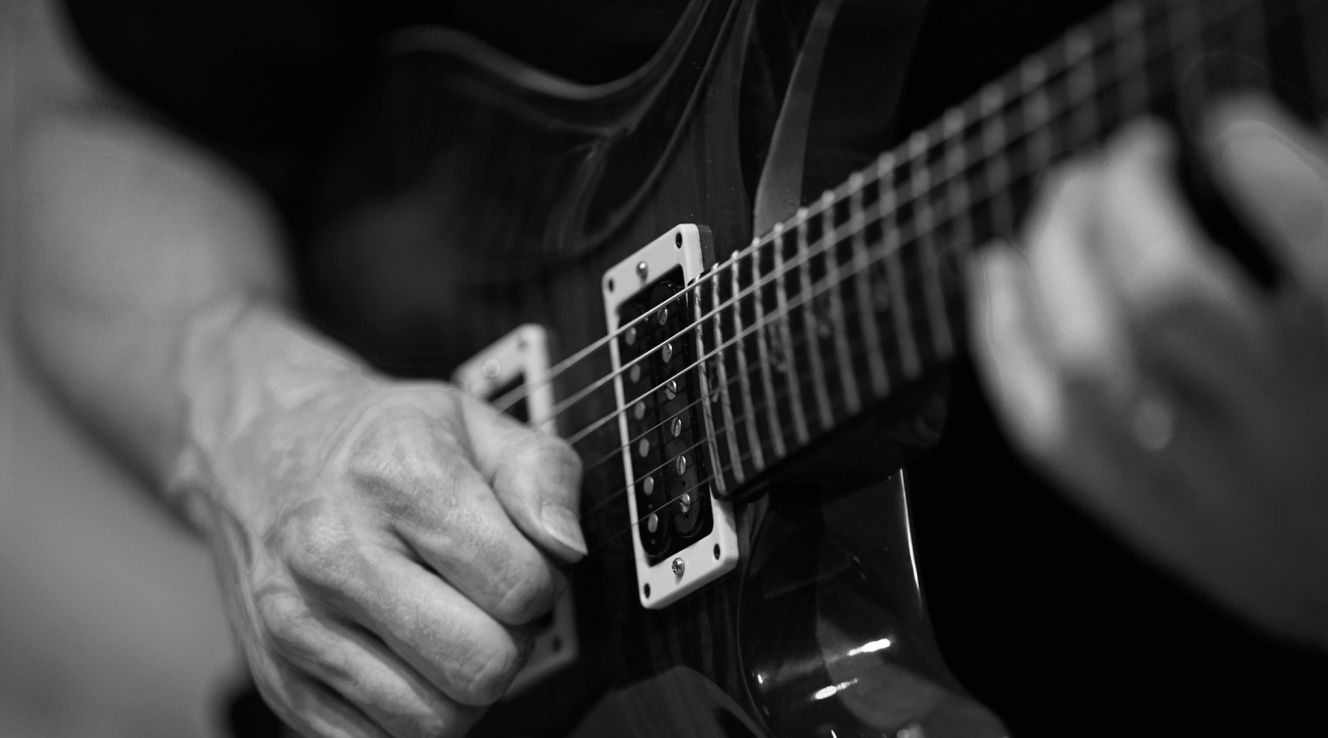
I’ve identified 16 primary elements to evaluate the effectiveness of picking techniques for guitar playing. They are:
* = Behavior by most people who use this technique is not inherent to the method itself.
Using these 16 primary elements, the three best picking guitar picking techniques are put to the test.

Ranking The 16 Primary Guitar Picking Technique Elements
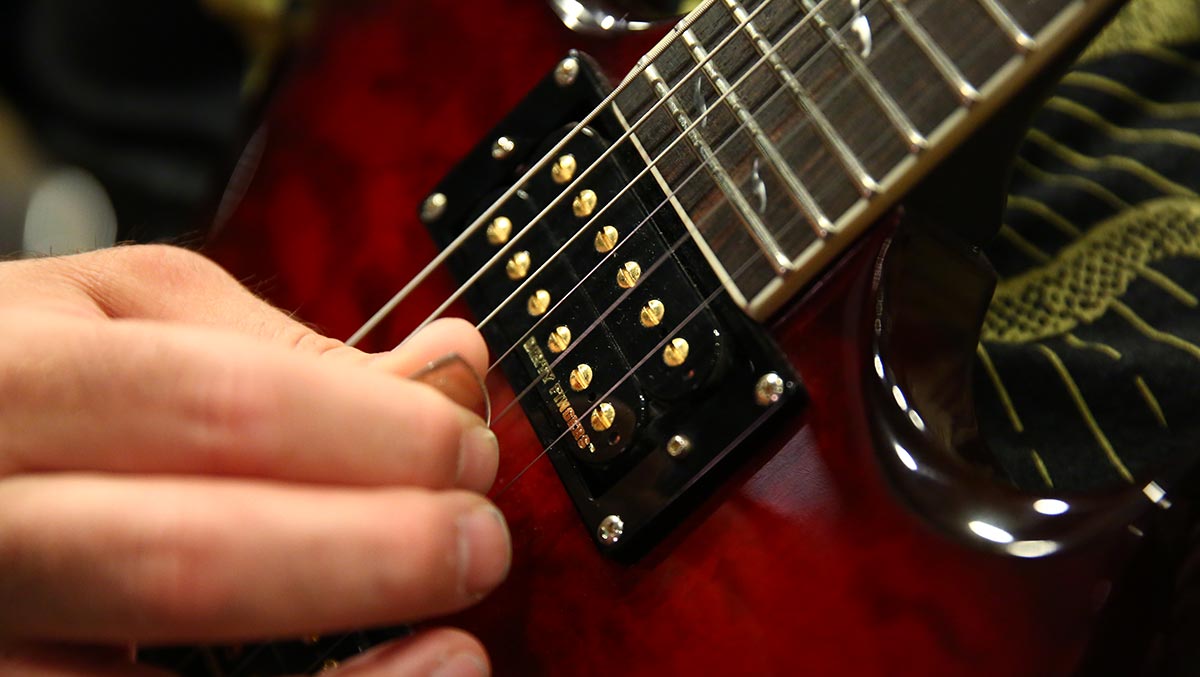
Not all 16 elements ought to be weighted equally, and there is much room for debate regarding which factors are most important.
However, in my opinion, the final two elements in the list (Maximum Expressive Potential and No Limitations Of Musical Choices) are the most important.
Both Alternate Picking and Directional Picking do exceptionally well in these critical areas.
However …
Economy Picking (The Would-Be Superior Guitar Picking Technique) Fails Horribly.
Economy Picking is near perfection until it comes to pre-planning, and MASSIVE restrictions on expression and musical choices – making Economy Picking nearly hopeless as a standalone primary picking technique for guitar.
That leaves Directional Picking as the undisputable best picking technique for guitar.
Why Directional Picking Is The Best Picking Technique For Guitar and Far Superior To Alternate Picking
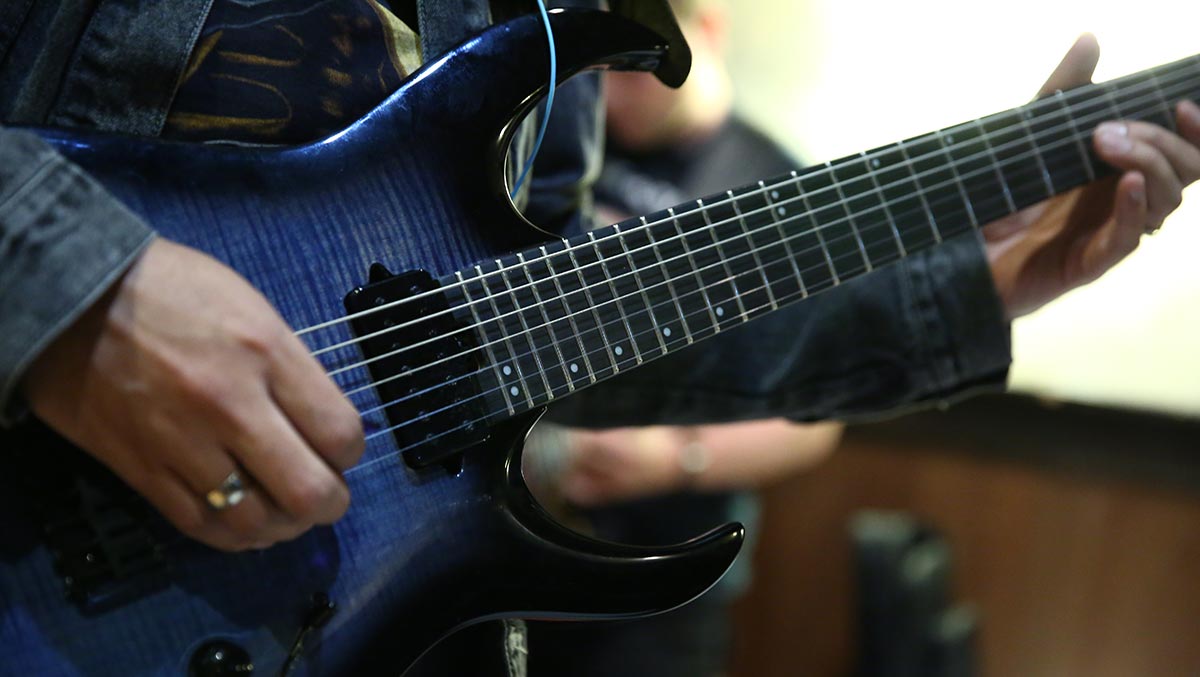
The shortest distance between two points is a straight line. After playing any note (no matter if played with a downstroke or an upstroke), the most logical way to move to the following note is to move directly to it. Hence the name Directional Picking. Let’s quickly look at all the possibilities.
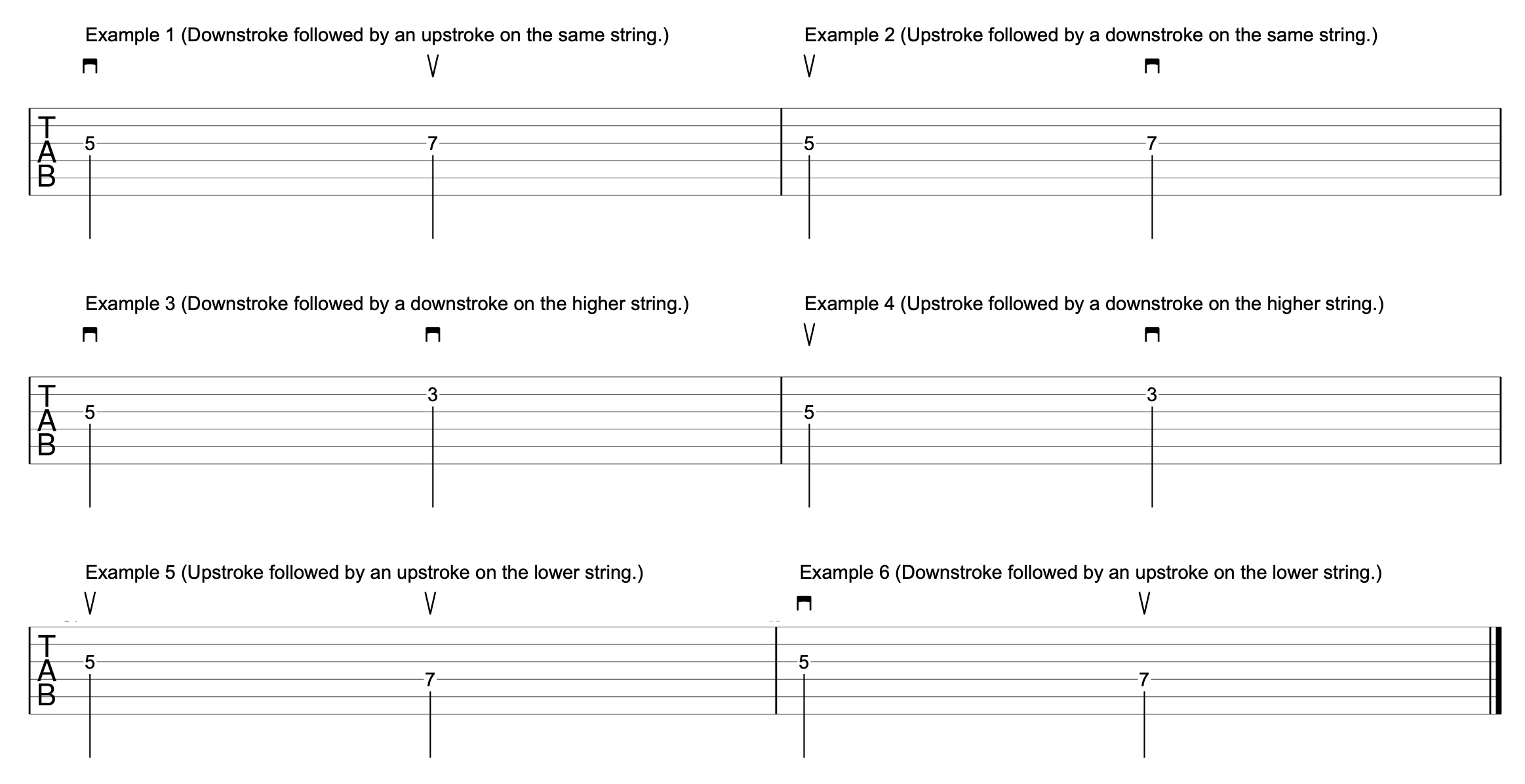
Now, let’s compare what often happens when using Alternate Picking, and you immediately see how illogical, inefficient, and harder it is to pick using Alternate Picking!

Directional Picking always moves to the following note in the shortest distance possible (without preplanning as Economy Picking requires).
Compared to Alternate Picking’s “outside” picking motions, Directional Picking substantially shortens the distance between notes on different strings in both the horizontal (X-axis) and vertical (Y-axis) directions. This added efficiency reduces the speed required to make string changes quickly.

Because Directional Picking never contains an “outside” picking motion, the pick spends more time in the string trench (this is my term for the space between two strings) during string changes. By comparison, “outside” picking motions that often happen when using Alternate Picking spend almost no time in the string trench – thus making Alternate Picking much less efficient.
There are three main ways that Directional Picking is more precise than Alternate Picking:
a. Anytime the guitar pick leaves the string trench (the space between guitar strings), the risk of making a picking error increases. Since this occurs more often (and for much more extended periods) when using Alternate Picking, Directional Picking is more precise by default.
b. The additional efficiency created by moving in the shortest possible path to the following string reduces the picking speed required to make string changes, thus further reducing the chance of picking errors – especially when playing at high speeds.
BY AT LEAST 100%
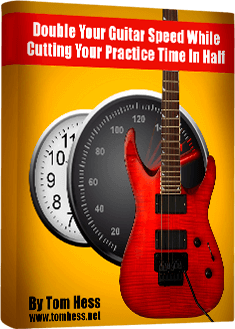
EMAIL TO GET ACCESS
By submitting your info, you agree to send it to Tom Hess Music Corporation who will process and use it according to their privacy policy.
c. Directional Picking allows one to play without the picking hand needing to “slam on the breaks” to jump over a string when using “outside” picking on the guitar.
Slamming on the breaks after a faster movement is not simple at high speeds, making the hand more prone to picking errors (arriving too early or too late to the following string).
Directional Picking’s greater efficiency automatically increases picking speed potential.
Directional Picking gains further guitar speed potential due to better use of inertia and less tension (explained in detail below).
BY AT LEAST 100%

EMAIL TO GET ACCESS
By submitting your info, you agree to send it to Tom Hess Music Corporation who will process and use it according to their privacy policy.
The precision (thus reduced risk of picking errors) of Directional Picking allows a Directional Picking player to push the upper limits of your top speed further with less risk of making mistakes in the picking hand.
Yes, some Alternate Pickers can also play very fast, but they’ve got to work harder and be a bit more careful...
...especially when they are forced to make outside picking motions during string changes.
It's simply easier to use the efficiency and precision advantages of Directional Picking not only to play faster and cleaner but to use far less effort in doing so.

EMAIL TO GET ACCESS
By submitting your info, you agree to send it to Tom Hess Music Corporation who will process and use it according to their privacy policy.

EMAIL TO GET ACCESS
By submitting your info, you agree to send it to Tom Hess Music Corporation who will process and use it according to their privacy policy.
Directional Picking’s better logic, efficiency, precision, speed potential, less tension (see below), and greater ease of picking fast and clean all compounds on each other make Directional Picking much easier to master than Alternate Picking.
After teaching Directional Picking to several thousand guitar players through my online electric guitar lessons, I’ve found two things to be true:
First, exeperienced guitar players/students who have spent years using Alternate Picking find Directional Picking to be easier to master IF (and this is a big “if”) they ONLY use Directional Picking daily for about 100 days.
After this period, their picking skills are almost always substantially better with Directional Picking than ever after years of Alternate Picking.
To fully master Directional Picking takes a bit longer than 100 days, but a significant improvement over Alternate Picking is almost always seen by day 100.
(Note: this is only true IF the student uses Directional Picking ONLY during that entire period. When students don’t do this and practice both Directional and Alternate Picking for 100 days, mastering Directional Picking takes much longer.)
Second, students closer to the beginner level virtually always find Directional Picking to master, even if they previously started with Alternate Picking.
The graph below illustrates how much easier it is to gain greater guitar picking technique skills in less time using Directional Picking instead of Alternate Picking.
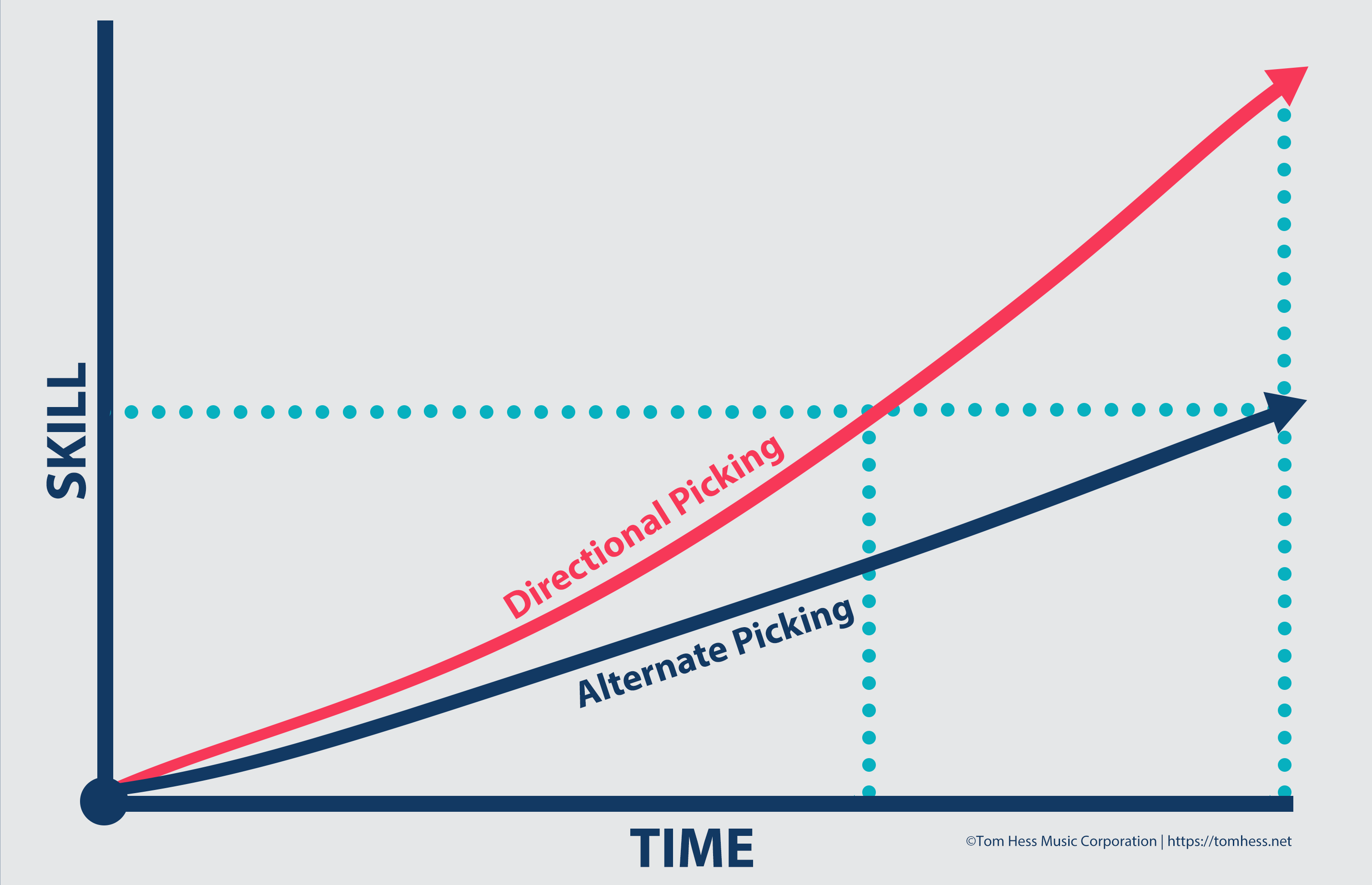
As stated earlier, one can (and many have) achieve excellent guitar picking speed/skills using Alternate Picking. However, it takes longer and is harder to do than Directional Picking.
Since Directional Picking has no “natural” accents, accents must be intentional, not mindless, and out of sync.
To be fair, Alternate Picking also does not have “natural accents” – despite the false claim of many Alternate Picking players.
Directional Picking, as a technique, does not have an inherent advantage over Alternate Picking. However, because so many Alternate Pickers tend to rely on the down-up motions of Alternate Picking to accent automatically on downstrokes, those players tend to have a significant disadvantage when accenting (or not accenting) certain notes on the guitar.
The following are quotes from Dr. Tommaso Zillio - very lightly edited (with permission) for clarity - on the difference between Alternate Picking and Directional Picking relating to inertia, tension, and safety.
Text in [brackets] below is my additional comments to add context to what Dr. Zillio’s quotes were referring to.
“Just before picking a string, your speed needs to be high (or you bounce on the string). Just after picking, your speed is much lower since some energy is transferred to the string to make it vibrate.”
“In outside picking [which occurs 50% of the time using Alternate Picking to change strings, never in Directional Picking], you pick the A string down. Now the pick is between strings A and D; your speed is low and downward.

Next, you need to increase your speed (to jump over string D)…

… then when you are at your peak speed, you need to brake…

reverse the motion, and take it up to enough speed to pick string D [with appropriate articulation].

This is very wasteful, and you need to put a lot of tension into your wrist to do it (the moment you will train Directional Picking, you will realize that...).”
See the graphic below to visualize what Tommaso just described …

“In inside picking [such as when using Directional Picking], you pick the A string UP. Your speed is slow after picking, so it's easier to reverse the motion. You also have more space to accelerate since you are jumping over the A string (i.e., less stress on your wrists). ALL the energy you put in at this phase is useful in order to pick string D since you are not stopping. So: it's easier to reverse the movement (due to lower residual speed before reversing), and most of the energy you put in goes into picking the string - not into braking and reversing the picking [motion].”
Here's another graphic to visualize Tommaso’s quote above …

“Keeping the speed constant, the smaller the motion/space, the HIGHER the acceleration involved. And the acceleration is directly proportional to the force you need to put in (F = MA), i.e., the stress on your wrist.”
“You don't need to 'believe' the 'theoretical explanation.' Try picking using Alternate Picking and Directional Picking as fast as you can, and take notice of what notes your wrist tenses up. That is your empirical evidence. The fact that you are not measuring precisely the accelerations involved does not prevent you from detecting with your own body WHEN you need to accelerate and WHICH of the accelerations is higher - and that's all that is required to make my point.”
[Directional Picking has] ”much less risk of injury. (Less stressful for your tendons).”
“… In addition, your arm and wrist can be more relaxed = more speed potential.”
I don’t think I could have stated all that better.
I’ll add this: Given the choice, why would anybody want to compromise their guitar-playing ability for an inferior technique?
Enter Your Name And Email Address To Watch The Class:
By submitting your info, you agree to send it to Tom Hess Music Corporation who will process and use it according to their privacy policy.
Sweep Picking is based upon Directional Picking’s core principle (to pick the following note in the shortest distance possible) and is opposed to the principle of Alternate Picking (strict alternation of down-up-down-up strokes), making Sweep Picking and Alternate Picking completely incompatible.
Alternate Pickers must learn how to sweep pick. For Directional Pickers, sweeping typically comes naturally.
Are Directional Picking & Alternate Picking Sometimes The Same?
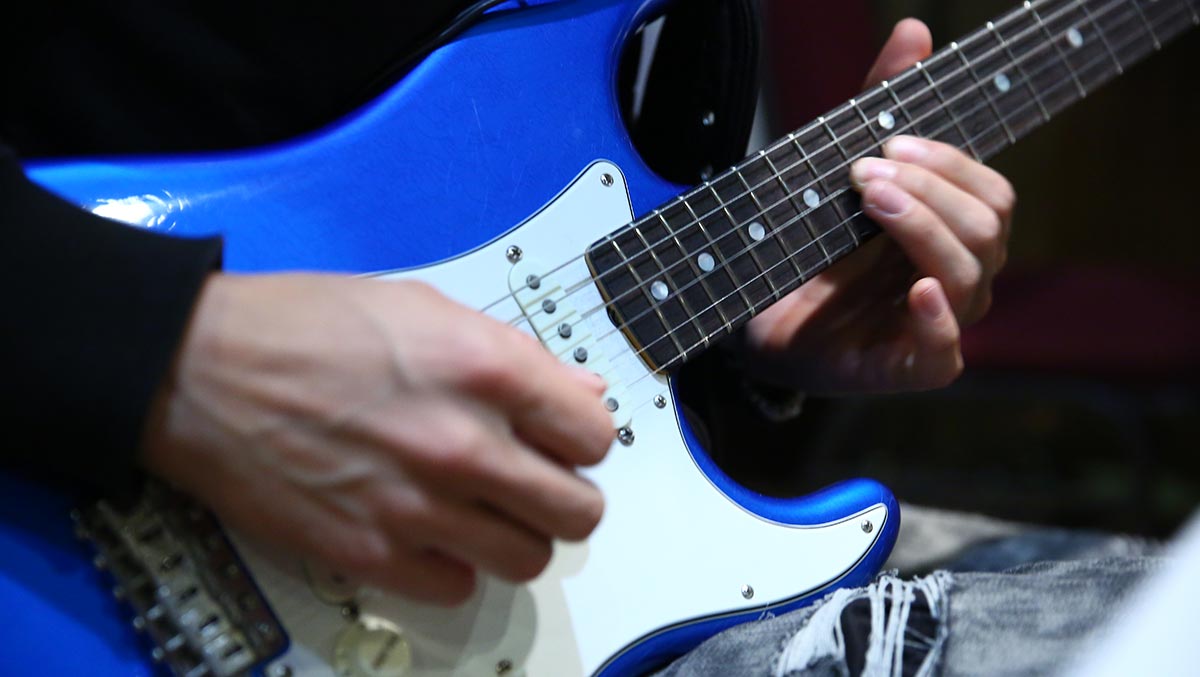
No.
Even when the picking motions look the same, the two techniques are NEVER the same.
Compare these examples:

Alternate Picking = strict alternation of down and upstrokes

Directional Picking = picking motions to the following note are chosen based on the shortest route.
The pick moves the same way in these two examples, but the REASONS behind each are entirely different. That’s why the two picking techniques are never the same – no matter how much it may appear, they are in some rare situations, such as in the examples above.
Aren’t Economy Picking And Directional Picking The Same?
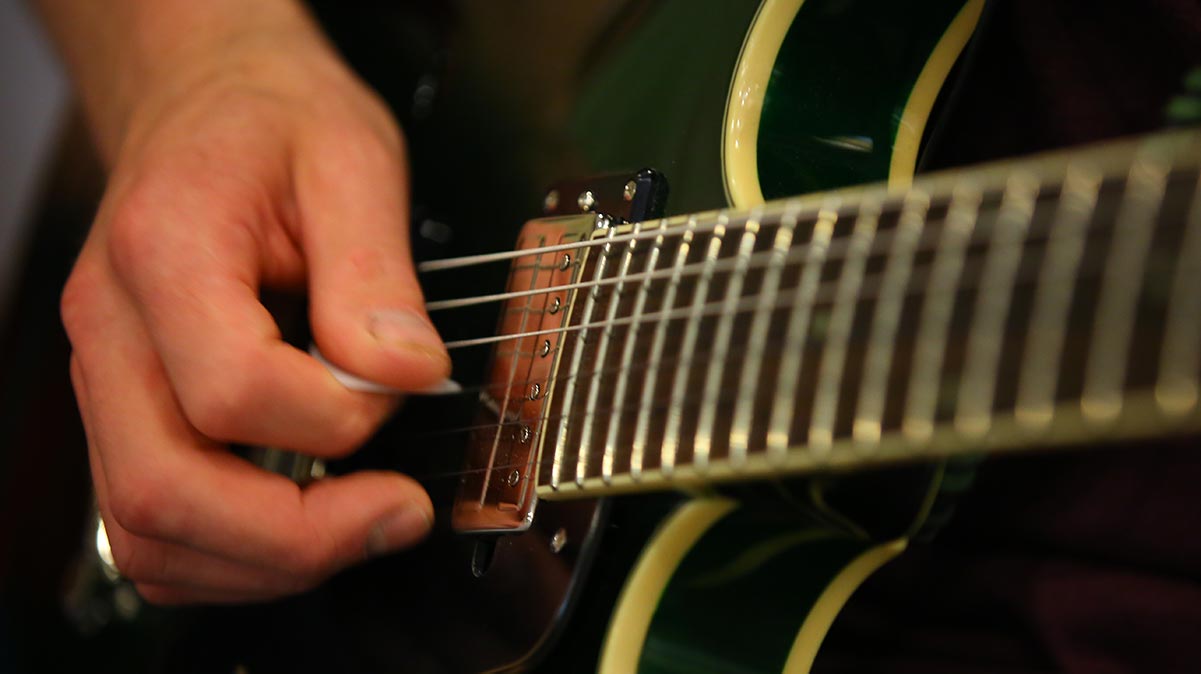
No, because the philosophy behind each picking technique is different – and so is the thinking the player must do when using each.
The picking motions appear the same when comparing the following two examples, but the REASONS are different.

Economy Picking = Advanced preplanning of all picking motions while prohibiting all notes requiring the pick to jump over a string. (Severely limiting what you can play with this guitar technique).

Directional Picking = picking motions to the following note are chosen based on the shortest route. (No notes are prohibited).
If Directional Is The Best Picking Technique For Guitar, Why Don’t More Great Players Switch To Directional Picking?
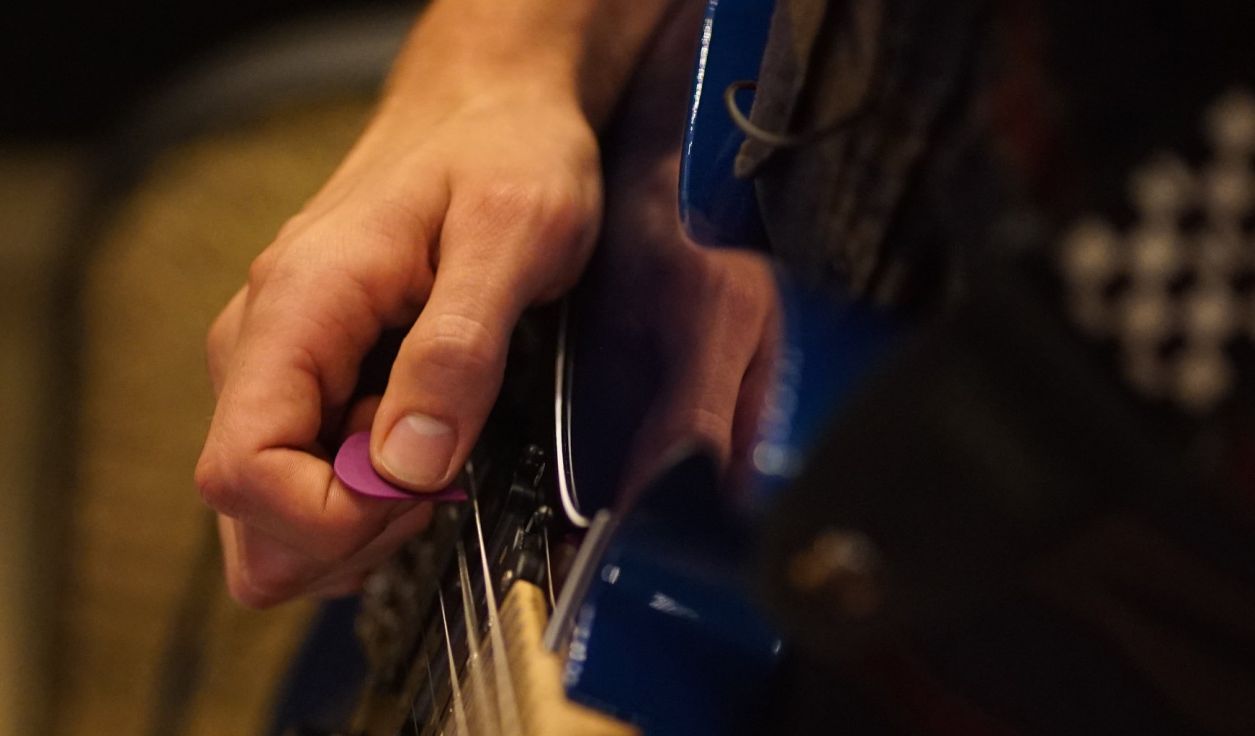
This is an excellent question - even if some ask it to imply that somehow Directional Picking isn’t superior to Alternate Picking.
Fact is, some great guitarists have made the switch at some point in their playing—for example, George Bellas.
As Directional Picking becomes more widely known, more well-known players will make the switch.
Directional Picking wasn’t the typical technique taught to guitar players back when many famous players were learning to play. So, they learned Alternate Picking, invested years of hard work, and eventually became great players – even though they could have reached the same or higher level of picking skills in less time with Directional Picking.
For many, their Alternate Picking skills became good enough to play at the level they wanted. Some of them simply didn’t want to put in the work required to play faster (and with greater ease) - they became satisfied with their existing skill levels - and that’s ok.
For others, the desire to play at a higher level was there. However, the thought of starting over once their music career had already begun may not have been a practical option. The constant cycle of writing, recording, touring, writing, recording, touring, etc. (and the time pressure on them to keep up with demand) meant that overhauling their entire picking technique could be risky - unless they had a 3 to 6-month break in their career (and wanted to invest that time to master Directional Picking).
Many didn’t make that choice or didn’t want to dedicate the time, energy, and effort to do so in whatever bit of downtime they had.
Why Many Guitar Players Won’t Switch From Alternate Picking Even After Seeing For Themselves The Overwhelming Objective Evidence That Directional Picking Is The Best Picking Technique For Guitar
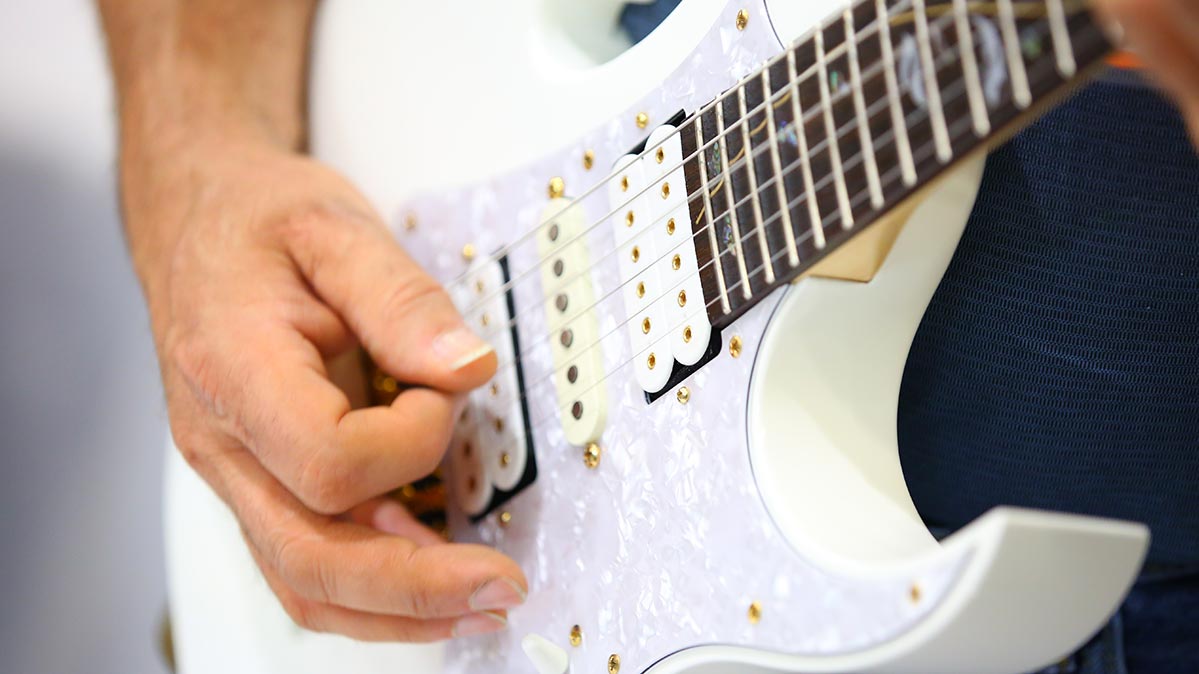
Here are some common reasons:
If you have felt that way too, it only means that you’re just not (yet) using the best guitar picking technique you could be to help you play guitar at your very best. But you can start today.
If you have felt that way, don’t. Your guitar heroes don’t need to be defended. They are not under attack. Some of my favorite guitar players are Alternate Pickers. I’m simply a fan of their music, not any particular picking technique they may use.
If you feel this way, I get it. I went through the same thing. At the time, I didn’t want to go through a process where I hadn’t yet developed my Directional Picking skills, and my Alternate Picking skills were decaying! Today, I can tell you this was the single best guitar technique decision I’ve ever made. It was worth the short-term pain for a lifetime of massive gains!
Just because someone (or 1,000 ones) more famous than you does things a certain way doesn’t mean you should. Think for yourself.
I, too, once thought this way. I’m so glad I switched to Directional Picking because the payoff was HUGE. Reaching my level of playing with Alternate Picking would have been possible, but it would have taken me much longer to get here and been much harder.
If you’ve ever experienced this, there are three common reasons why you felt stuck:
You did not TOTALLY abandon Alternate Picking in the transition period – Never using Alternate Picking in this period is essential to properly and quickly train Directional Picking.
You simply gave up too early.
You didn’t take guitar lessons online with a pro teacher who can train you the right way to master Directional Picking.
Once you get past those things, it's smooth sailing from there. And the payoff is enormous.
Why It’s Usually A Bad Idea To Learn & Master Both Alternate Picking And Directional Picking
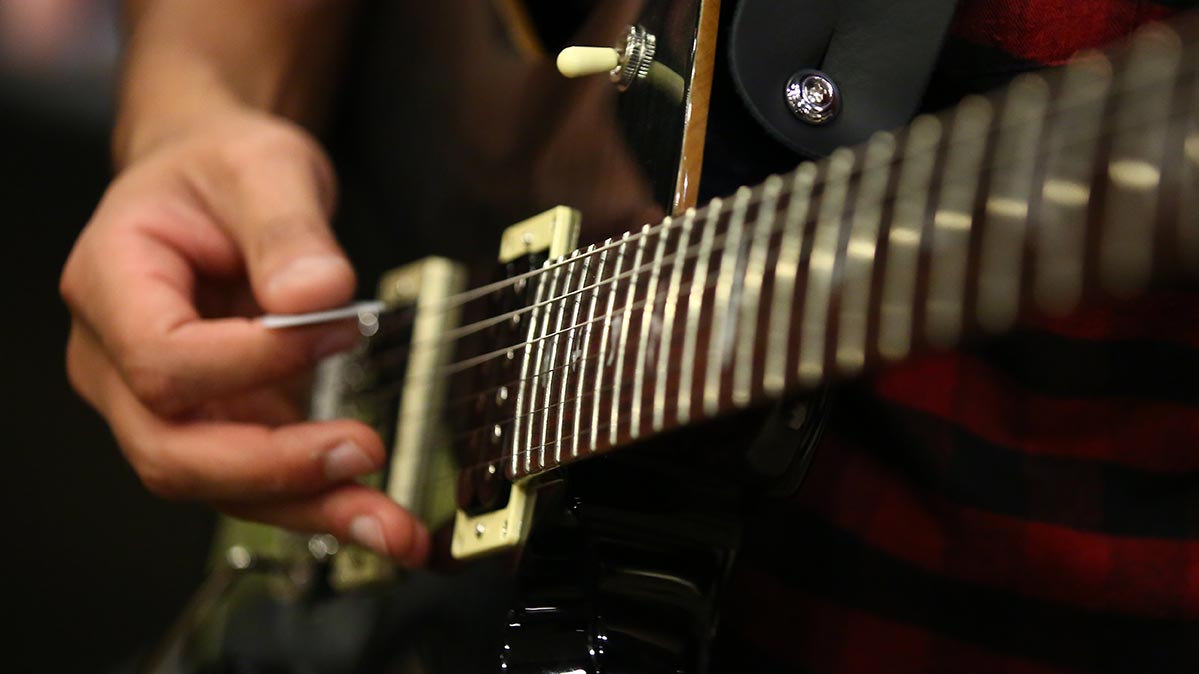
On the surface, it might seem a good idea to master both picking techniques for the guitar. However …
It’s usually a bad idea. Here’s why:
(If you skipped past most of this article and stumbled upon this section, do yourself a huge favor and read the entire article. When you do, I think you’ll see for yourself that Alternate Picking has absolutely zero advantages over Directional Picking).
Your guitar practice and music-making time is much better invested in developing other aspects of your guitar playing - such as other techniques, phrasing, improvising, rhythm playing, ear training, music theory, and many other things that will make up your overall playing and musicianship.
However, if you refuse to let go of Alternate Picking, don’t even bother learning Directional Picking. In this case, you’d be better off sticking with Alternate Picking than trying to master both guitar-picking techniques.
Ready To Switch To Directional Picking? Here’s Exactly What To Do Next:
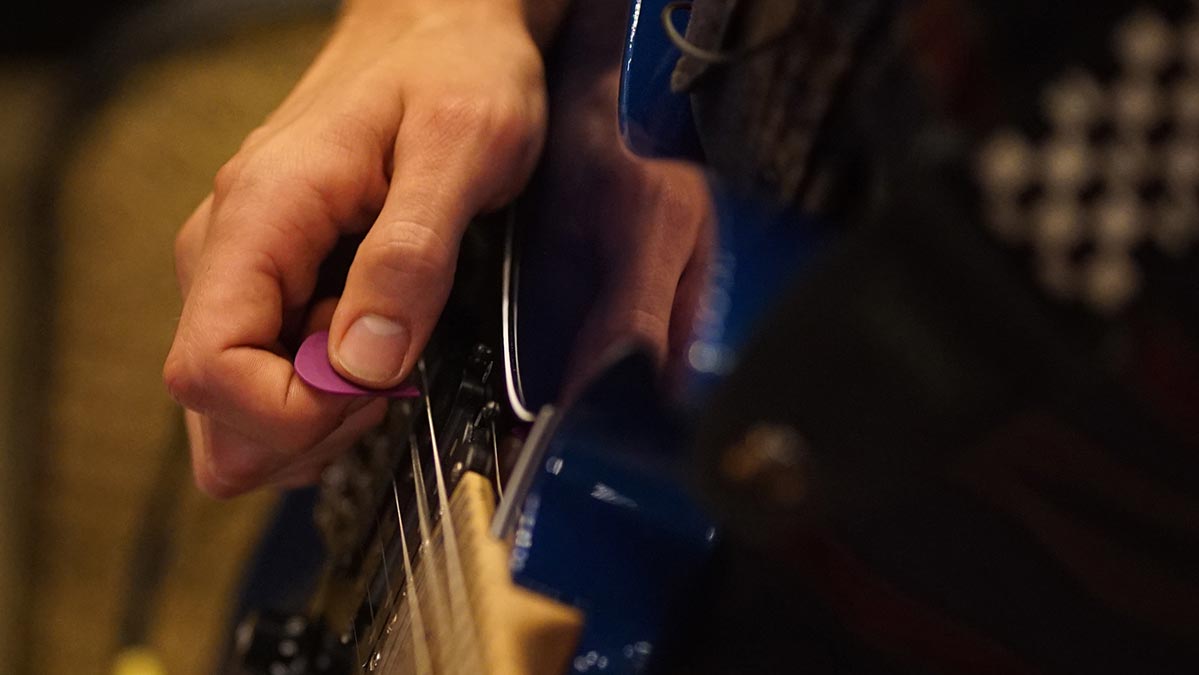
To master Directional Picking, your brain needs to develop (and then strengthen) the right neural pathways.
I’ll give you two ways to master this technique.
Once you learn the exact ways to apply Directional Picking, make sure you ONLY play guitar using Directional Picking. Do NOT play ANYTHING using Alternate Picking for at least 100 days. This is critical to mastering Directional Picking much, much faster.
Why? Because right now, your brain’s dominant picking neural pathways are the Alternate Picking ones. That’s why Alternate Picking “feels” natural to you right now.
For Directional Picking to become dominant and “feel” natural to you, you need those neural pathways to become bigger and stronger than the old Alternate Picking ones. Before the 100-day training period (when you ONLY train Directional Picking), It's unfair to compare the two techniques.
What To Expect When You Switch To Directional Picking
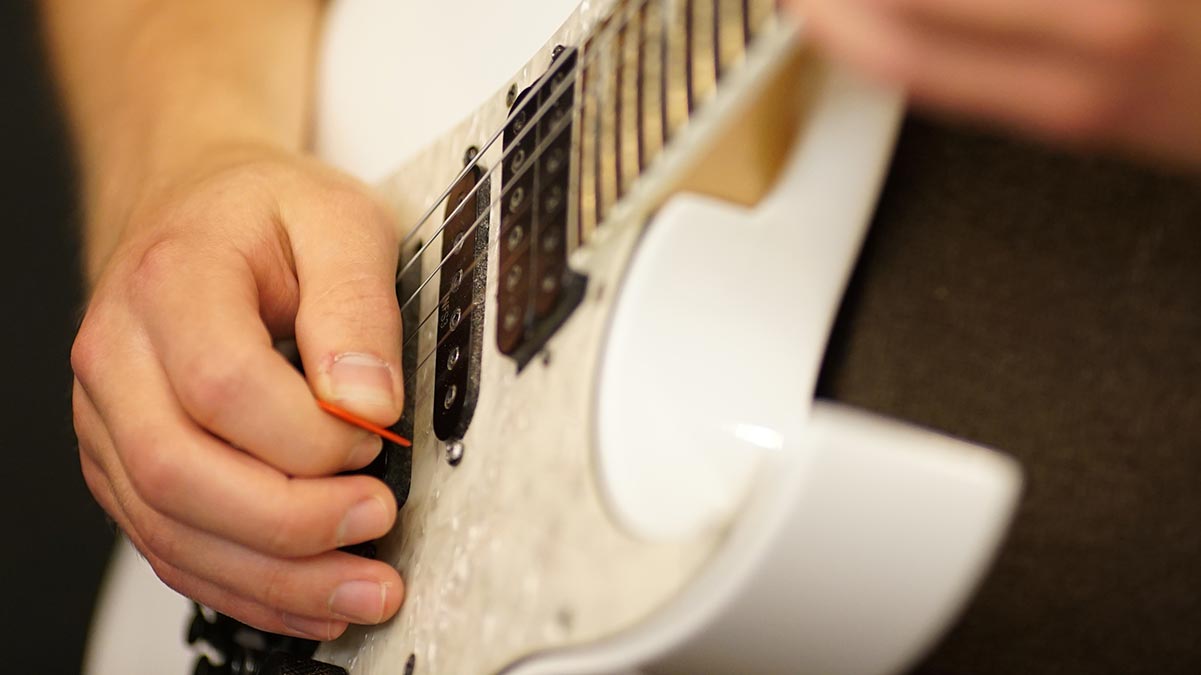
During the 100-day training period, your guitar playing WILL feel as if it’s gotten WORSE!
That’s because it IS getting worse!
But don’t freak out and give up.
When you only train Directional Picking for this period, your guitar picking will begin to feel natural again … But this time, you will have developed a far superior guitar-picking technique.
And that means you’ll have new picking skills well beyond what you have right now or what you would have had if you had stayed with Alternate Picking.
The following graph is what I expect with the students I train to switch from Alternate Picking to Directional Picking – IF THEY FOLLOW MY TRAINING EXACTLY!
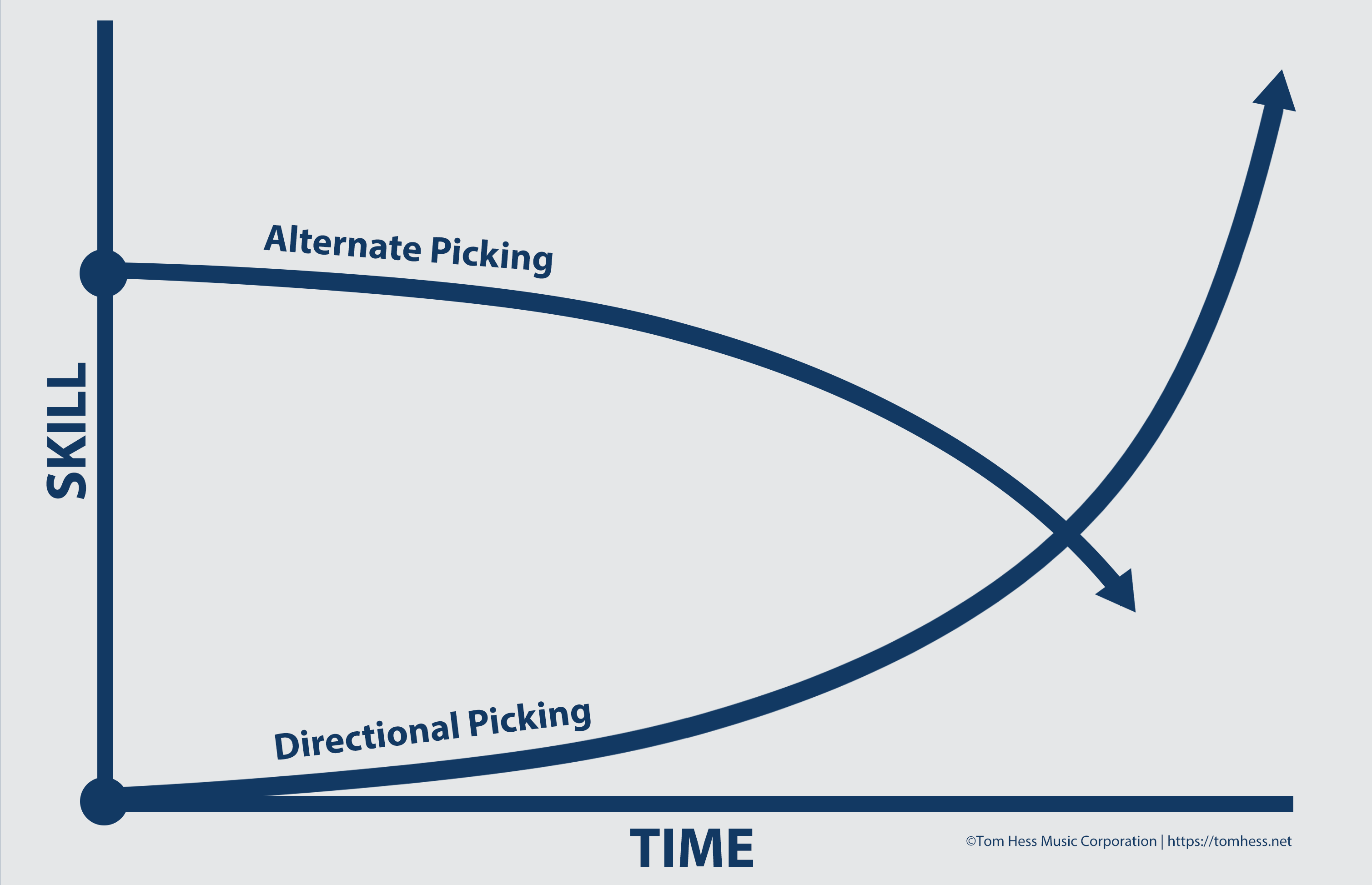
How To Learn And Master Directional Picking
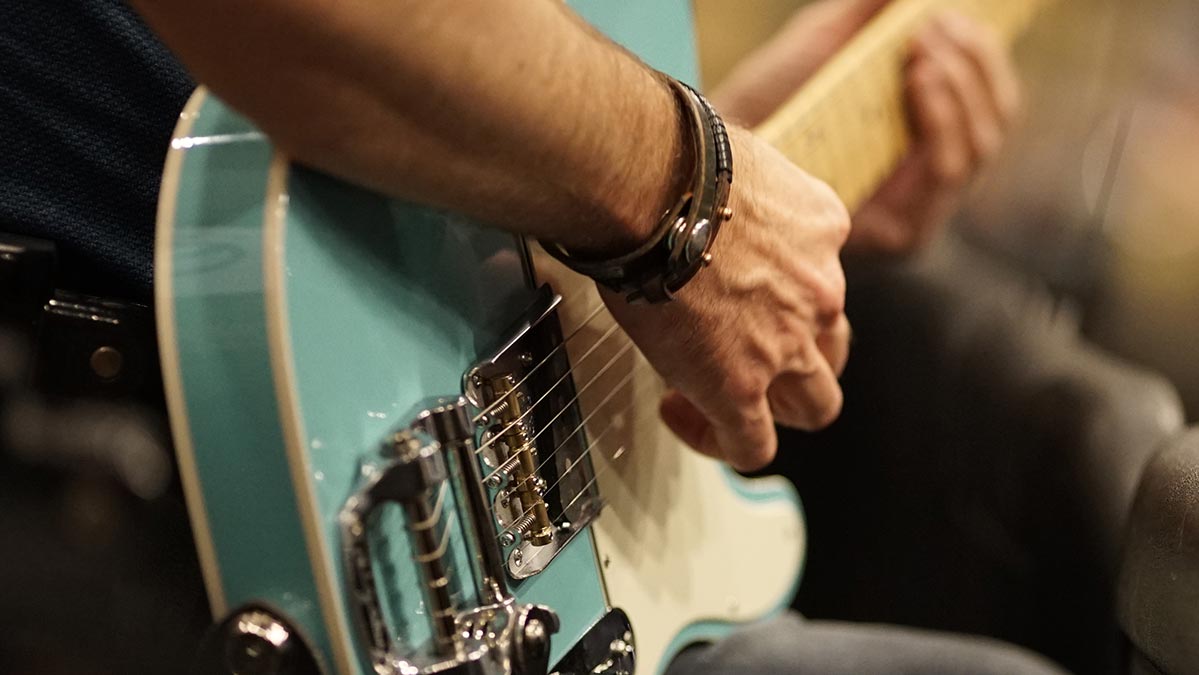
- As explained earlier, to make the switch from Alternate Picking (or any other picking technique) to Directional Picking, the best thing you can do is focus on Directional Picking only for 100 days - playing nothing with any other picking system in this period.
If you’re willing to do this and stick to it, you will master Directional Picking much faster. If not, you can still master Directional Picking, but it will take longer and be harder.
- The next step is to ensure you have the correct posture and hold the guitar correctly (this is especially important when practicing while sitting – most guitarists get this wrong).
- Next, it’s essential to play with the least amount of tension possible while simultaneously picking with optimal articulation. One mistake many guitarists make when reducing tension is sacrificing strong articulation for decreased tension. You CAN do both, and if you want to master guitar picking (no matter what picking technique you use), this step is critical.
- Then, ensure you have complete control over the guitar. That means that the picking is clean and controlled.
- Next up: develop your 2-hand synchronization to build guitar speed. My article: The 10-Step Guide To 2 Hand Synchronization For Amazing Guitar Speed Technique, is an excellent place to start.
- When performing two downstrokes or two upstrokes in a row when changing strings, it's essential that you sweep through the string change and not play two separate down or upstrokes.
You can do all this (and more) to master Directional Picking independently. But I can tell you there is a much faster and easier way. If you want me to help you, as I’ve helped thousands of students to learn and master Directional Picking, start online guitar lessons.
Frequently Asked Questions About Directional Picking
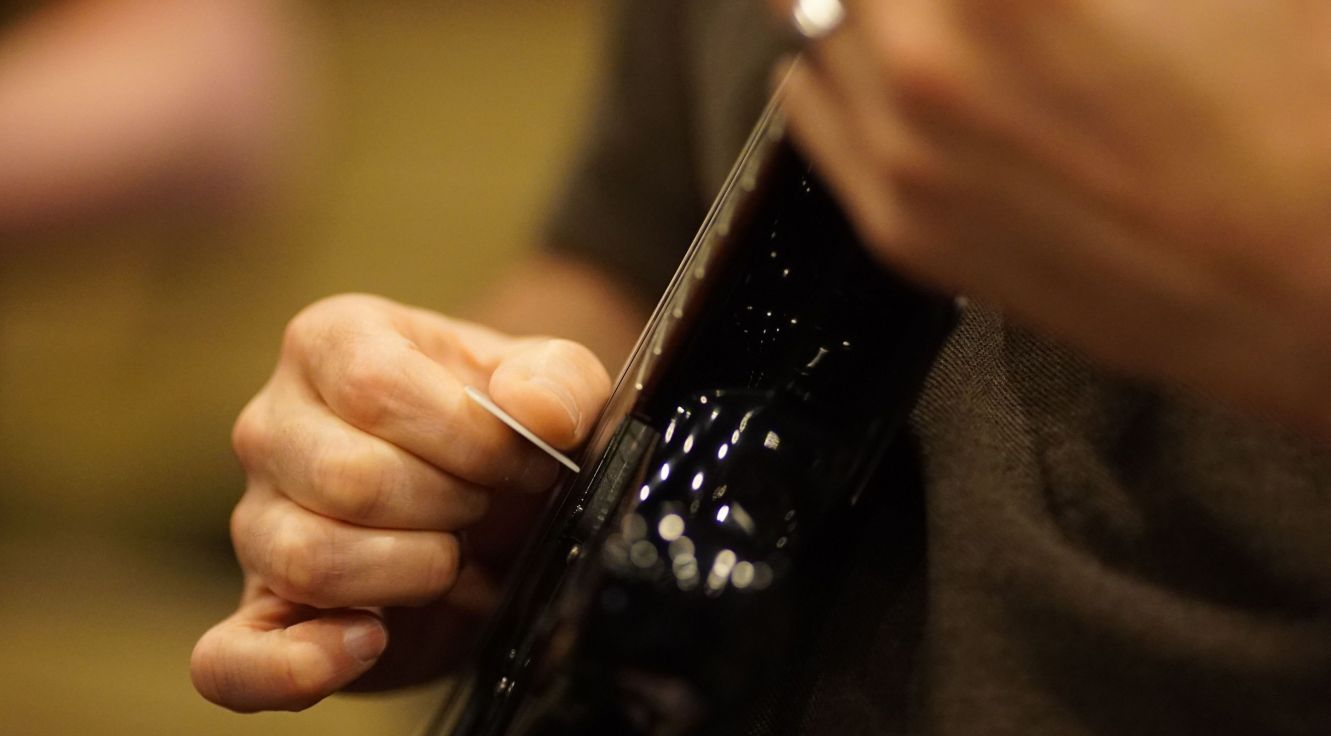
Q: I’ve been playing guitar for 25 years. Should I change from Alternate Picking to Directional Picking?
A: Yes. Definitely.
Q: It seems you prioritize speed potential over everything else; why?
A: This is not true. If speed were the top priority, I’d be recommending Economy Picking. The top priority ought to be expression potential – this immediately eliminates Economy Picking as a viable technique.
The Bottom Line … Decide For Yourself
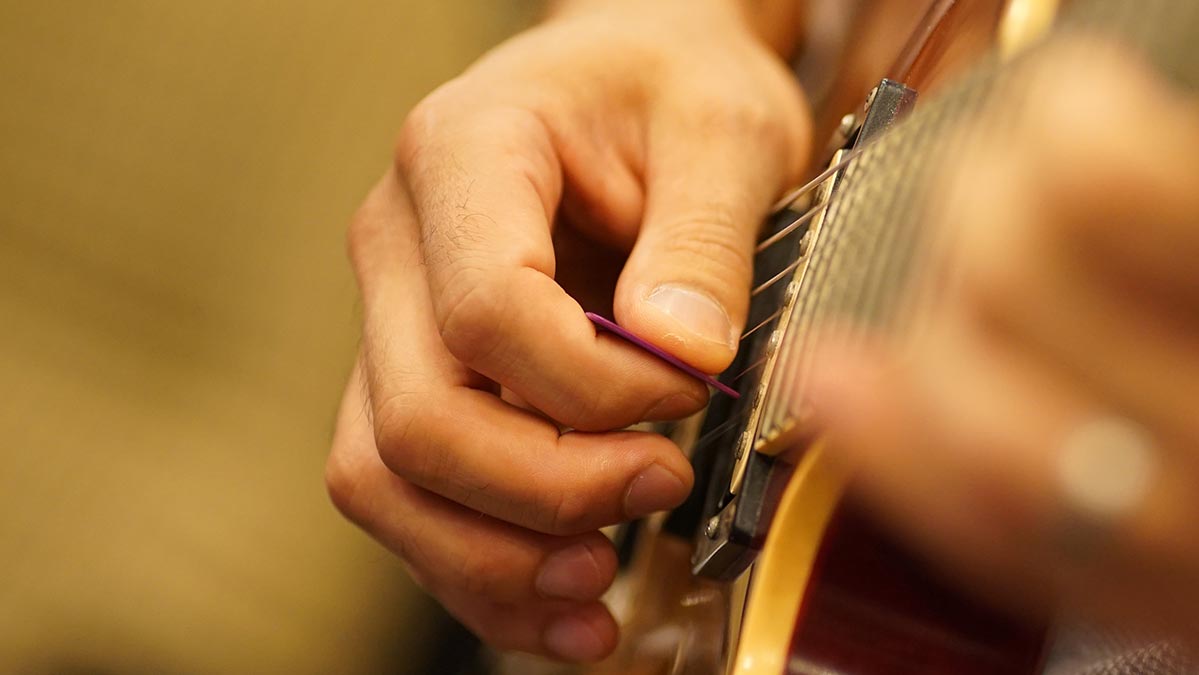
Guitar techniques are a means to an end. That end (in my opinion, at least) is to express yourself as much as possible while using as little effort as necessary.
I believe Economy Picking is too musically restrictive to be a viable Picking Technique ever fully to express oneself.
When trained well, Directional Picking has no disadvantages compared to Alternate Picking.
Don’t take my word for it.
Look for yourself at the science, physics, and physiology of Directional Picking and compare it to Alternate Picking.
Invest 100 days correctly training on Directional Picking. Then, decide for yourself.
I can help you with this. Learn more about my private, personalized online electric Breakthrough Guitar Lessons.
You get guitar lessons specifically made to your guitar playing goals, challenges, skill level, and musical interests. Hundreds of my guitar students are experiencing nearly life-changing breakthroughs in their playing as we speak.
To become one of them, click the green “Get Started” button on the banner below to learn more.

Take guitar lessons with the #1 top guitar teacher who trains and certifies other guitar teachers worldwide - take the best rock guitar lessons online.


